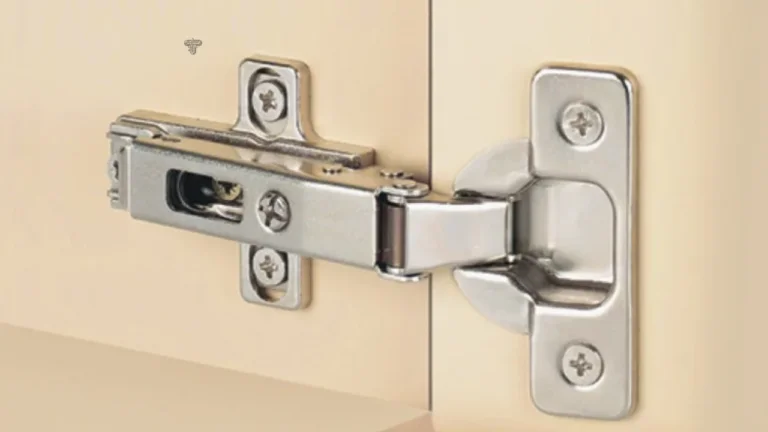How to Upgrade Your Home Lighting with Wafer LEDs
Understanding Wafer Light Advantages
Space-Saving Design and Thin Profile
Wafer lights are super thin. This is a big deal if you don’t have much space above your ceiling. They fit where regular recessed lights can’t.
They’re also great for renovations. You don’t need to cut big holes or mess with a ton of wiring.
Think of them as the sleek, modern alternative. They give you that recessed look without all the hassle.
Simplified Wiring and Installation
Installing wafer lights is pretty straightforward. Most come with simple connectors.
You just need to connect the wires and pop them in. It’s way easier than traditional lighting.
Even if you’re not an electrician, you can probably handle this. Just remember to turn off the power first!
Energy Efficiency and Longevity
LED wafer lights use way less energy. This means lower electricity bills.
They also last a really long time. You won’t have to replace them every year.
Plus, they don’t get as hot as old-school bulbs. That’s a win for safety and energy savings.
Planning Your Wafer Light Layout
Determining Optimal Spacing
Proper spacing is key. It affects overall brightness and evenness. Think about the wafer light’s beam angle.
Consider the light output (lumens). More lumens mean you can space them further apart. Don’t want hot spots or dark corners.
Experiment with a few lights first. This helps visualize the final effect.
Considering Room Dimensions
Room size dictates the number of wafer lights needed. A small room needs fewer lights.
Ceiling height also matters. Lower ceilings might require more lights, closer together. Taller ceilings can handle wider spacing.
Think about the room’s function. A kitchen needs brighter light than a bedroom.
Avoiding Obstructions and Glare
Avoid placing lights near obstructions. This includes beams, ducts, or furniture.
Consider the angle of the light. Direct light can cause glare on shiny surfaces.
Use diffusers or adjust the angle. This minimizes glare and creates a softer light. Think about where the light will reflect and adjust accordingly.
Essential Tools for Wafer Light Installation
Required Electrical Components
Installing wafer lights requires a few key electrical components. You’ll need wire connectors to safely join wires. Don’t forget the appropriate gauge electrical wire for the job.
Consider having extra wire on hand. It’s always better to have too much than not enough. These components are essential for a safe and functional installation.
Always double-check local electrical codes before starting any work.
Measuring and Marking Equipment
Accurate measurements are key to a professional-looking installation. A good tape measure is a must-have. A level ensures your lights are straight.
Pencils or markers are needed to mark the ceiling for cutting. Consider using a stud finder to avoid cutting into joists. This will save you a lot of headaches.
Precise marking leads to a cleaner, more professional finish.
Safety Gear and Precautions
Safety first! Always wear safety glasses to protect your eyes from debris. Rubber gloves are essential when working with electrical wiring.
Turn off the power at the breaker before starting any electrical work. A voltage tester confirms the power is off. This is a critical step for preventing electrical shock.
Never assume the power is off. Always test it yourself. Working with electricity can be dangerous, so take every precaution.
Step-by-Step Wafer Light Installation
Preparing the Electrical Connections
First, safety first! Turn off the power at the breaker. This is super important. Then, check the wires with a non-contact voltage tester to be absolutely sure.
Next, you’ll need to strip the ends of the wires to expose the copper. Use wire strippers for a clean cut. Make sure you have enough wire exposed to make a secure connection.
Finally, identify the hot, neutral, and ground wires. Usually, they’re color-coded: black for hot, white for neutral, and green or bare copper for ground. If you’re unsure, consult an electrician.
Securing the Junction Box
Most wafer light kits come with a junction box. If not, you’ll need to buy one that’s compatible with your wiring. Make sure it’s properly rated for electrical use.
The junction box protects the wire connections. It’s a safety measure to prevent shorts and fires. Securely mount the junction box to a nearby stud or joist using screws or nails.
Connect the wires from the ceiling to the wires inside the junction box. Use wire connectors (like wire nuts) to twist the wires together tightly. Make sure the connections are snug and secure.
Inserting the Wafer Light Fixture
Now, it’s time to install the wafer light itself. Carefully push the wires and junction box up into the ceiling cavity. Make sure everything is tucked away neatly.
Most wafer lights have spring clips that hold them in place. Squeeze the clips together and insert the light into the hole. Release the clips, and they should snap into place, securing the light to the ceiling.
Ensure the light is flush with the ceiling. If it’s not, double-check that the clips are properly engaged and that there are no obstructions in the ceiling cavity.
Testing the New Lighting
Before you celebrate, double-check everything. Make sure all connections are secure and that the wafer light is properly installed. Now, flip the breaker back on.
Turn on the light switch. If the light doesn’t turn on, immediately turn off the breaker and recheck your wiring. Look for loose connections or incorrect wiring.
If the light works, congratulations! You’ve successfully installed a wafer light. Repeat the process for any remaining lights. Enjoy your new, energy-efficient lighting!
Customizing Your Wafer Light Ambiance
Adjusting Color Temperature Settings
Wafer lights often come with adjustable color temperature. This lets you change the light from warm to cool. It’s a simple way to change the mood of a room.
Think about what you use the room for. A warmer light is good for relaxing. A cooler light is better for working.
Experiment with different settings to find what you like best. It’s all about making the space feel right for you.
Integrating with Dimmer Switches
Dimmer switches are a great addition to wafer lights. They give you control over the brightness. This is useful for different times of day.
Install a compatible dimmer switch. Make sure it works with LEDs. This will prevent flickering or buzzing.
Dimmers add flexibility. You can have bright light when you need it. You can also dim the lights for a cozy feel.
Achieving Desired Lighting Effects
Consider the overall effect you want. Do you want bright, even light? Or do you want something more dramatic?
Use multiple wafer lights to create layers of light. This can add depth to a room. It can also highlight certain features.
Think about the placement of your lights. This can change how the room feels. It’s all about playing with light and shadow.
Integrating Wafer Lights with Existing Fixtures
Replacing Traditional Recessed Cans
Upgrading to wafer lights doesn’t always mean starting from scratch. Many homeowners want to blend new lighting with what’s already there. It’s totally doable, but it takes some planning.
Think about the existing recessed cans. Can they be easily removed? Or is it better to retrofit them? This decision impacts the whole project.
Wafer lights offer a streamlined look. They can make a space feel more modern, even when mixed with older fixtures.
Matching Aesthetics and Trim Styles
Getting the look right is key. You don’t want a patchwork of different styles.
Pay close attention to trim styles. Are the existing lights round or square? What color are they? Try to find wafer lights that match as closely as possible.
It’s often easier to replace all the trims to ensure a uniform appearance. This small step can make a big difference in the final result.
Addressing Joist Obstacles
Joists can be a real pain. They often get in the way of new light placement.
Wafer lights are great because they’re thin. They can fit in tight spaces where traditional recessed lights can’t. This is a huge advantage when dealing with joists.
Sometimes, you might need to shift the light slightly to avoid a joist. Plan carefully and measure twice before cutting any holes.
Ready for a Brighter Home?
So, that’s the scoop on upgrading your home lighting with wafer LEDs. It’s a pretty straightforward project, and the payoff is big. These lights fit almost anywhere, making your rooms look cleaner and brighter. You get to pick the right light color, too, which is a nice touch. Plus, they use less power, which is good for your wallet. If you’re looking for a simple way to make your living spaces feel fresh and new, giving wafer LEDs a shot is a smart move. You’ll probably wonder why you didn’t do it sooner.







